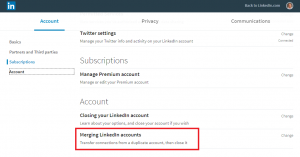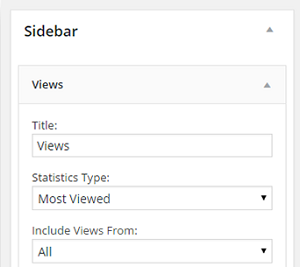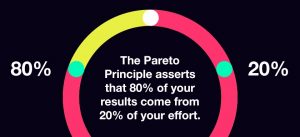— March 26, 2019
Every e-commerce brand should be blogging.
Not just because content marketing is a super effective tactic for building trust, generating leads, and increasing sales. (Though it is really good at these things!)
But because—quite simply—other marketing methods aren’t doing their jobs as effectively anymore. Or, at least, they’re not able to do it on their own.
Direct response product advertising, for instance, is great at some things. It gets people to take action immediately. It’s easy to objectively measure. And it’s especially useful for brands just starting out who need to quickly sell products to grow their business.
But direct response also falls short in some important ways:
- Timeliness. Product ads only appeal to people who are in the buying mindset. E-commerce marketers need to deal with the fact that people aren’t always ready to buy something—especially not right away, and especially from a brand they’re not familiar with.
- Saturation. Saturation happens when you’ve hit your audience over the head with the same ads over and over again. When this happens, the cost of acquiring customers just keeps rising.
- Nurturing lifetime customers. People typically don’t remember brands—at least not after one purchase. They remember stories. Think about the last time you ordered something on Amazon just because you needed a specific product at that exact moment in time. Do you remember the brand of the product you bought? Probably not. More than likely, you processed your payment and never thought about that brand again.That’s convenient and great for consumers! But it’s pretty terrible for brands. And for small brands that are just starting out, being an afterthought is a death sentence.
That’s where content marketing—and especially an entertaining, informative blog—comes in.

You can use blog posts at every single stage of the sales funnel. They’re really good at building brand awareness, establishing long-term trust, and staying in touch so that customers will remember you and continue to buy again and again and…you get the point.
But how can time-strapped, budget-conscious marketers at growing e-commerce brands make sure they’re getting the most out of their blogs?
What types of blog posts should small businesses publish?
That’s the million-dollar question we set off to answer in our 2019 Content Marketing Benchmark Report.
We analyzed how a whopping 9 million readers engaged with the 10,000 articles our customers published in 2018. Then, we used this data to establish content marketing benchmarks and understand what type of content generates the best results.
Keep in mind that this is not a comprehensive guide to business blogging. Instead, our goal is to give you clear actions you can take today to improve your blog content’s performance in terms of traffic, engagement rate, and reader time.
So without further ado, here are three fascinating findings from our 2019 Content Marketing Benchmark Report.
1. Long-form content is powerful, but it has to be easy to read.
You’ve probably heard that humans now have a shorter attention span than goldfish.
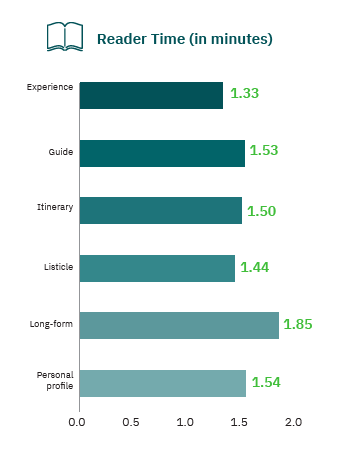
That “fact” has been proven false, but the sentiment still rings true. With media constantly bombarding us from every direction, we crave attention-grabbing content. Anything boring, tedious, or hard to read is immediately disregarded.
That doesn’t mean you shouldn’t publish long-form content. When it’s done right, it works really well.
In fact, our data shows that long-form articles keep readers on on-page for nearly 2 minutes on average—longer than any other type of blog content. Not only does this indicate that your blog content is resonating with your audience, it also impacts dwell time, a metric that helps you rank well on Google.
But for long-form articles to do well in other readership metrics, like engagement rate, you’ll want to make sure they have plenty of images and subheads to break up long chunks of text. You’re not writing a novel, after all.
2. There’s a good reason listicles won’t die.
Numbered list posts, AKA listicles, are often maligned as cheap click tricks.
But the data reveals that readers love them. (Hey—you’re reading one right now!)
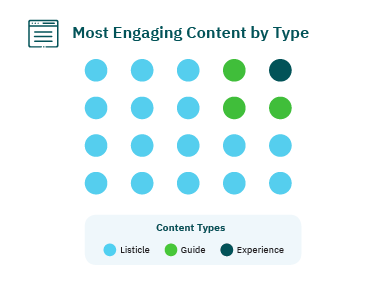
Use listicles generously. Just make sure those pieces are well-crafted and deliver on the headline’s promise. Otherwise, they’re just clickbait.
For example, let’s say you sell eco-friendly shoes in your online store, and you want to attract environmentally conscious consumers who may not even realize your product exists. Here are some good (and bad) examples of listicles you might publish on your blog.
Good examples of listicles:
- 5 Easy Ways to Reduce Your Carbon Footprint
This topic revolves around sustainability, a common value you and your customers share. It will bring the right people to your website so you can build brand affinity and start retargeting them with online ads. - 7 Things You Didn’t Know Could Be Made From Recycled Water Bottles
A blog post like this can bridge the gap between your audience’s interests and your product. Your shoes might be one item on this list, but the rest of the article is pure information and entertainment.
Bad examples of listicles:
- 5 Easy Ways to Reduce Your Carbon Footprint
Wait…how is this a good and a bad example of a listicle? Well, it’s all about the content within the post itself. If the tips you give readers are obvious (like “make sure to recycle”), the content will fall flat and they’ll lose trust in your brand. - 10 Reasons Everyone Loves Our Eco-Friendly Shoes
This topic is far too self-promotional, and the claim is grandiose. Everyone loves your shoes? Critical consumers won’t fall for this kind of self-serving content masquerading as entertainment.
3. Use punchy headlines—but make sure the content packs a punch, too.
We found that bold headlines like ‘These Are the 5 Most Heart-Pumping Hikes in Utah’ not only drove lots of clicks for our customers, but they also generated shares and comments on Facebook.
When readers see articles claiming something is the “best”—or fastest, craziest, most exciting, most outrageous, etc.—two things happen.
One, they may take it as a challenge. If they think they know the most intense hikes in Utah, they want to see if their favorites made the list.
And two, it induces a sense of FOMO (fear of missing out). As humans, we want to feel included. And if we fear that we’re missing out on the best of the best, that sense of belonging is threatened.
As with listicles, though, you need to make sure you meet the reader’s expectations. The content needs to back up the bold claims you’re making, or readers click off the page quicker than you can say content marketing.
<•••>
Well, there you have it. Millions of data points, boiled down to three straightforward tactics for improving your blogging results.
But there’s one key thing we left out: distribution.
How will you promote this content? Unless you’re a growth-hacking-SEO-guru-wizard (or whatever newfangled term the kids are using these days), most people won’t find your content on their own.
That’s where digital advertising comes in, and in particular, Facebook and Instagram advertising. You’ve got to do it, and you’ve got to do it well.
Digital & Social Articles on Business 2 Community
(26)

